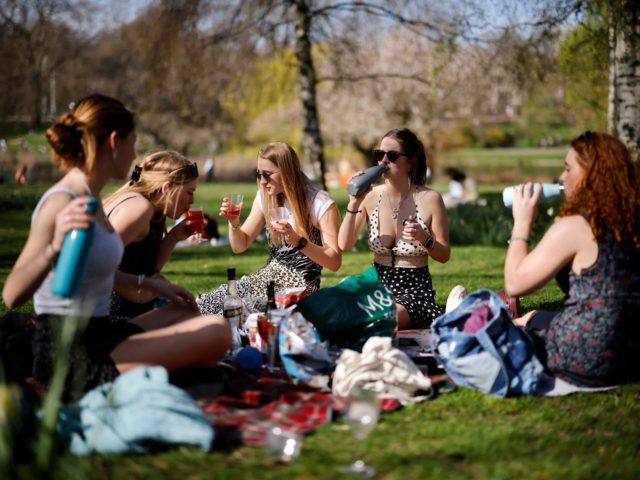Government scientists in Britain have reportedly pushed back against models which suggested that a third wave of the Chinese coronavirus would fall upon the country over the summer months as lockdown restrictions are lifted.
Projections conducted by the UK’s Scientific Pandemic Influenza Group on Modelling, Operational sub-group (SPI-M-O) of the SAGE quango last week painted a dire picture for another potential outbreak of COVID-19, even suggesting that a third wave in June could be comparable to the second wave of the virus in January.
However, senior scientific experts within the government told The Telegraph that the modelling was based on shaky presuppositions and that any further potential outbreak would not occur until at least the autumn months, even if mask-wearing and other restrictions are scrapped.
The modelling had been likened to the ‘Project Fear’ tactics employed ahead of the 2016 EU referendum and has been criticised for failing to account for the UK’s successful vaccination push as well as the typical seasonal nature of respiratory viruses.
An unnamed senior Government scientist — the Telegraph is perhaps the closest British newspaper to the Conservative government and frequently cites unnamed sources in Downing Street — told the broadsheet that there were “some big caveats” on the modelling, adding: “A lot depends on seasonality as well so it may well be that it’s more like autumn than summer.”
“Is that going to be affected by what’s happening in Europe? Well, possibly in the sense that if you get lots of travel coming back and forth that might increase it.
“I think that the expectation is that there will be further waves, but they won’t be as big as the ones that we’ve had, unless things go badly wrong. Timing, I think it’s more likely to be autumn than summer, but we’ll see.”
The revision comes as beer gardens, gyms, barbers, and shops in England have finally been permitted by the government to reopen their doors to the public, albeit still in a limited capacity until at least next month.
Researchers from the University of Edinburgh have also cast doubt on a possible reemergence of the Chinese virus during the summer, suggesting that sunshine limits the ability of the coronavirus to spread. The study suggested that skin may release nitric oxide under the sunlight of summer months, which limits the ability of the virus to replicate.
One of the authors of the study, Dr Richard Weller said: “There is still so much we don’t understand about Covid-19, which has resulted in so many deaths worldwide. These early results open up sunlight exposure as one way of potentially reducing the risk of death.”
The chairman of Health Geography at the University of Edinburgh and another co-author of the research, Professor Chris Dibben added: “The relationship between Covid-19 mortality, season and latitude has been quite striking, here we offer an alternative explanation for this phenomenon.”
While previous studies have tied the amount of Vitamin D within a population to lower mortality rates for the virus, the researchers at Edinburgh did not find a correspondence.
Public Health England (PHE) scientists have also suggested that Britain receives sufficient sunlight between April and September to limit the spread of the virus. The government health body did caution, however, that there is insufficient ultraviolet light between October and March to have an effect on the spread.
Even as some lockdown measures have been lifted over the past month, the number of people dying of the coronavirus in the UK has continued to fall, with just seven deaths reported on Sunday, the lowest since September 14th of last year.
Follow Kurt Zindulka on Twitter here @KurtZindulka

COMMENTS
Please let us know if you're having issues with commenting.